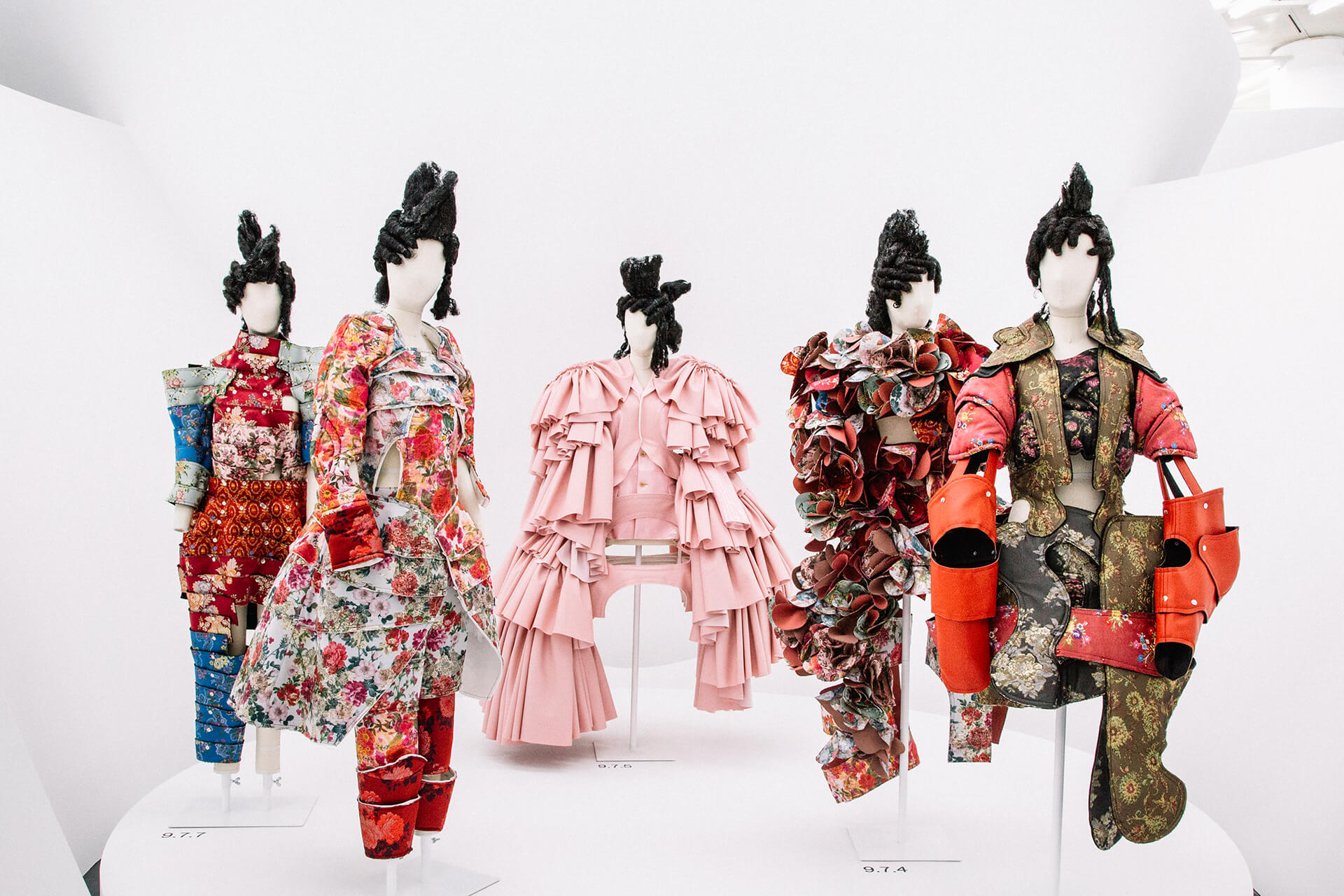Fashion Free from Norms: Rei Kawakubo
Bright lights and crisp white walls house the work of designer Rei Kawakubo. Yet, in an industry fixated on conventional appearances, a stark contrast looms. Beginning May 4, 2017, until September 4, 2017, the public is welcome to explore the innovative constructions of Rei Kawakubo at the Metropolitan Museum of Art in New York City. An ideal location since her pieces serves as an intermediary between art and fashion.
Originally from Tokyo, Japan, Kawakubo was a student of aesthetics, prompting her experiments with design and public perceptions of attractiveness. Kawakubo was aware that traditional styles and mass-produced trends customarily drive aesthetics within fashion. Strict labels also frequent the industry, yet she rejects these standard notions. She directly challenges the boundaries of fashion in her exhibit entitled Rei Kawakubo/Comme des Garçons: Art of the In-Between. Kawakubo expresses nine dichotomies, Absence/Presence; Design/Not Design; Fashion/ Antifashion; Model/Multiple; High/Low; Then/Now; Self/ Other; Object/Subject; and Clothes/Not Clothes. Each dichotomy is the title of unifying designs, bridging these polar opposite concepts.
The brand name itself is a dichotomy as Kawakubo, a woman designer, chose Comme des Garçons, translated to "like boys," signifying her interest in the gender spectrum. She contests rigid conceptions of the male and female in regards to biological identification against expression. For example, aspects of her work contrast hyper-feminine fashion. These progressive pieces refrain from shaping the female body, appearing as an androgynous style and demolishing the traditional female appearance. This design also allows for equality on an aesthetic level, where females are no longer bound to stereotypical, gender-specific aesthetics.
Additionally, Kawakubo explores dichotomies regarding development/maturity, culture, and body--all elements of the 'self.' Elements reflective of differing maturity levels appear with the fusion of youthful aspects such as playful color, shape, and texture presented on the adult body. Culture is evident by incorporating both Eastern and Western elements into styles. The presentation of her compelling experiences with the East and West displays the desirable aesthetics in both cultures, once again establishing a profound unity in these distinct identities. Kawakubo challenges the body as her own desired shapes are added to the already established female form. Unconventional shapes protrude from her pieces, redefining and reframing the body's dimensions. Kawakubo's work is therefore not limited by the confines of the human structure. She alters the human body for her desired shape. In defying orthodox forms, Kawakubo also commemorates deformities and abnormalities.
Alongside the rejection of social constructs and normative human forms, Kawakubo creates harmony amongst the world's diversity. Kawakubo understands that polarities may coexist and morph into a balanced design. In conclusion, the fluidity in structure, concept, and design free Kawakubo from norms and remains the backbone of her unique fashion aesthetic.
Image source: https://www.dezeen.com/2017/05/01/rei-kawakubo-comme-des-garcons-art-of-in-between-exhibition-opens-metropolitan-museum-art-new-york/




